school advocacy
It’s time to get clear on a language strategy for your child so that you can consistently practice language in your home and watch your child’s communication soar in less time!
Welcome!
Language Coach for Parents of kdis with hearing loss
I want to show you how to build better language skills at home so you can also parent with clarity and confidence!
Categories
hearing loss
sensory activities
sign language
1:1 Language Coaching
These are the kinds of resources that you will find on my blog!
Happy reading!
Sensory Music Activities for Toddlers
September 13, 2023
As a parent of a child with hearing loss, you may wonder if your child can enjoy music like other kids. The answer is yes! And, sensory music activities for toddlers creates a wonderful sensory experience for your child!
Read more sensory activities for babies 6-12 months
Music sensory play is a fun way to develop a child’s hearing sense while also honing their motor skills.
In fact, when we first started speech therapy with my boys, one of the first activities we workd on with the speech therapist was singing songs and play musical instruments!
From a speech point of view, babies and kids learn language through songs and music. It’s a very natural way for them to learn!
I remember that some of our first speech goals with the speech therapist were to sing songs like twinkle twinkle little star and then wait to see when our child would sing back to us.
We had a lot of fun singing and playing with our babies at an early age. And we were happy that they also learned good language skills as well!
In this blog post, I will share five sensory music activities for toddlers with hearing loss that you can enjoy with your child.
Sensory Music Activities for Toddlers
Music plays a significant role in the language and brain development of children. From an early age, children start to learn the rules for life and common routines through songs about daily life.
Even before babies and toddlers can communicate with words, they start to imitate hand motions to songs and recognize familiar music beats.
One way that music helps toddlers to learn language is through active participation in perfoming the hand motions and dancing to songs.
When a child is an active partipant in playing music and singing songs, they learn language through the repetitive nature of the songs.
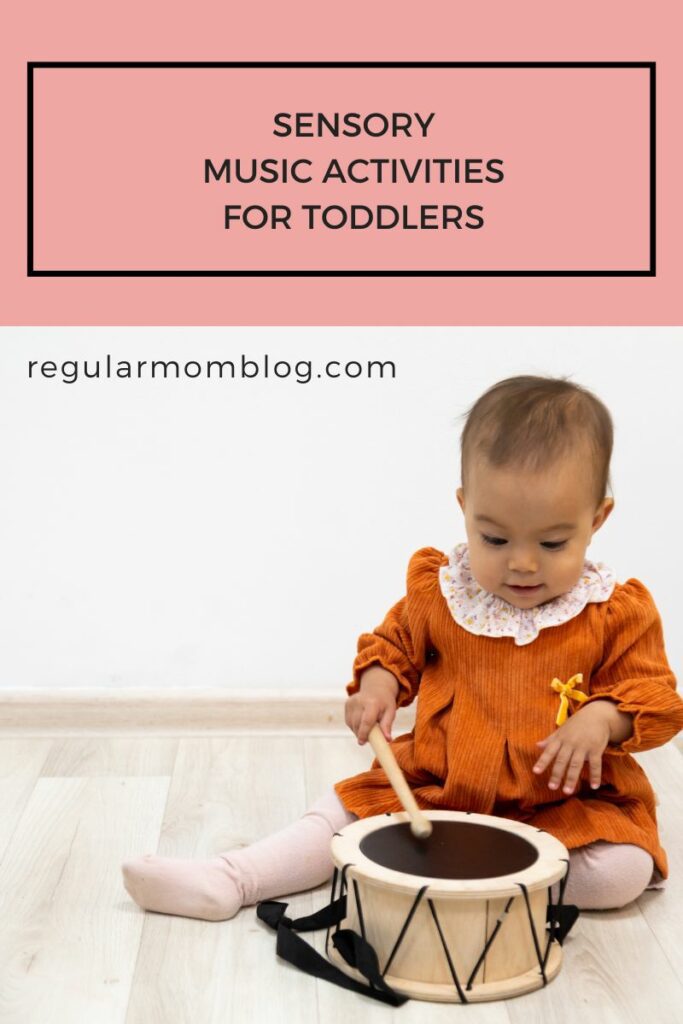
Singing songs and playing insturments will also help children develop better hand-eye coordination and improve their motor skills.
Furthermore, music provides opportunities for social interaction and emotional expression. This encourages toddlers to communicate their feelings and connect with others through this universal language.
Hence, sensory music activities are not only enjoyable but also foster comprehensive developmental progress.
Setting Up a Sensory Music Activity
To set up a sensory music activity for your toddler, you’ll need a variety of musical instruments that produce different sounds. You may consider percussion instruments such as drums, maracas, or tambourines. You could also include string instruments like a small guitar.
If purchasing these instruments is not feasible, you can create DIY instruments at home using everyday items such as pots, pans, and plastic containers filled with beans.
Here’s a simple step-by-step guide on how to set up a sensory music activity:
- Choose a Comfortable Space: Find a comfortable area in your home where your toddler can move around freely.
- Prepare the Instruments: Arrange the chosen musical instruments within easy reach for your toddler. Introduce each instrument one at a time, and demonstrate how to create sounds with each one.
- Participate Actively: Engage with your child in playing the instruments. Model how to use the instruments, encourage imitation and applaud their efforts to create a positive and supportive environment.
- Include Variation: Change the instruments or the way they’re played occasionally to introduce new sounds and maintain your child’s interest.
Remember, the goal is to allow your child to explore different sounds and have fun in the process.
Music Activities for Toddlers
Creating an environment where toddlers can explore the world of sound and music can be highly beneficial for their cognitive and emotional development.
Sensory music activities are a fantastic way to stimulate your child’s senses and enhance their ability to recognize and react to different sounds.
This form of interaction not only nurtures their curiosity but also fosters creativity, coordination, and listening skills.
Let’s dive deeper into how to set up engaging sensory music activities for your little ones.
1.Musical Instrument Exploration: Gather a variety of musical instruments together.
Encourage your child to explore the instruments by touching, shaking, tapping, and listening to them.
You can also make your own instruments using household items, such as rice-filled bottles or cardboard boxes.
This activity promotes fine motor skills, hand-eye coordination, and auditory discrimination.
 Toddler Musical Instruments, 9PCS Wooden Percussion Musical Instruments Toy Set for Kids Toddlers Preschool Educational Music Toys for Boys and Girls
Toddler Musical Instruments, 9PCS Wooden Percussion Musical Instruments Toy Set for Kids Toddlers Preschool Educational Music Toys for Boys and Girls YEZI Kids Toy Classical Ukulele Guitar Musical Instrument, Brown
YEZI Kids Toy Classical Ukulele Guitar Musical Instrument, Brown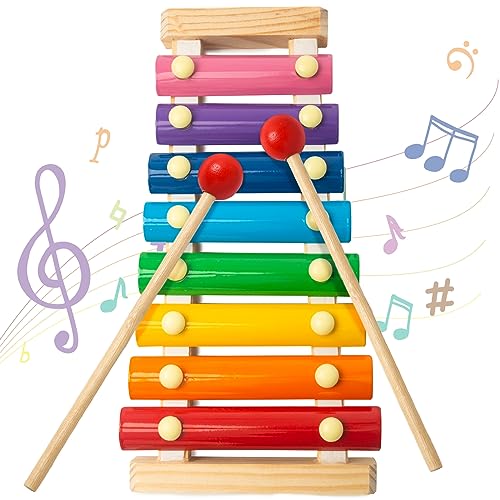 MCPINKY Xylophone for Kids, Xylophone Musical Toy with Child Safe Mallets Educational Musical Instruments Toy for Toddlers 1-3
MCPINKY Xylophone for Kids, Xylophone Musical Toy with Child Safe Mallets Educational Musical Instruments Toy for Toddlers 1-3 Hape Blues Harmonica | 10 Hole Wooden Musical Instrument Toy for Kids, Orange (E8917)
Hape Blues Harmonica | 10 Hole Wooden Musical Instrument Toy for Kids, Orange (E8917)
2. Musical Storytelling: Choose a favorite storybook or nursery rhyme and read it to your child.
Then, use musical instruments or your own voice to add sound effects or music to the story.
For example, you can use a rainstick to mimic the sound of rain or sing a melody to accompany a character’s actions.
This activity stimulates imagination, language skills, and musical creativity.
 Top 25 Nursery Rhymes Videos For Kids – Top Rhymes Collection
Top 25 Nursery Rhymes Videos For Kids – Top Rhymes Collection Favorite Nursery Rhymes
Favorite Nursery Rhymes Nursery Rhymes – Mother Goose Club Playhouse presents Rhyme With Us!
Nursery Rhymes – Mother Goose Club Playhouse presents Rhyme With Us! Fun Songs for Kids by Rock ‘N Learn
Fun Songs for Kids by Rock ‘N Learn
3. Dance Party: Put on some upbeat music and dance with your child!
You can hold hands, or use scarves or ribbons to add a visual element to the dancing.
Encourage your child to move their body in different ways, such as jumping, twirling, and stomping.
This activity promotes gross motor skills, balance, and rhythmic awareness.
 OVELLIC Karaoke Microphone for Kids, Wireless Bluetooth Karaoke Microphone with LED Lights, Portable Handheld Mic Speaker Machine, Great Gifts Toys for Girls Boys Adults All Age (Rose Gold)
OVELLIC Karaoke Microphone for Kids, Wireless Bluetooth Karaoke Microphone with LED Lights, Portable Handheld Mic Speaker Machine, Great Gifts Toys for Girls Boys Adults All Age (Rose Gold) CCINEE 24Pcs Dance Scarves for Kids Play Music Scarves Dance Scarf Play Scarves Movement Square Juggling Silk Tricks Scarves Rhythm Band Scarves Scarfs for Children Movement(12 Colors)
CCINEE 24Pcs Dance Scarves for Kids Play Music Scarves Dance Scarf Play Scarves Movement Square Juggling Silk Tricks Scarves Rhythm Band Scarves Scarfs for Children Movement(12 Colors)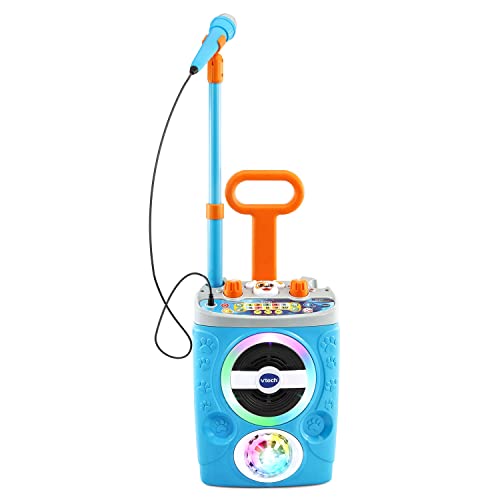 VTech Kidi Superstar Jr. Karaoke
VTech Kidi Superstar Jr. Karaoke
4. Sensory Sound Boxes: Create a series of boxes or containers that contain different materials, such as sand, rice, beans, or water.
Each container should also have a musical theme, such as shakers, bells, or chimes.
Encourage your child to explore the contents of each box by feeling, shaking, and listening to them.
This activity stimulates tactile and auditory senses, as well as curiosity and experimentation.
5. Music and Movement Games: Play simple games that combine music and movement, such as “Freeze Dance” or “Musical Chairs”.
In “Freeze Dance”, you play music and when you pause it, your child has to freeze in whatever position they are in.
In “Musical Chairs”, you play music and when you stop it, your child has to find a chair to sit in.
These games promote listening skills, turn-taking, and socialization.
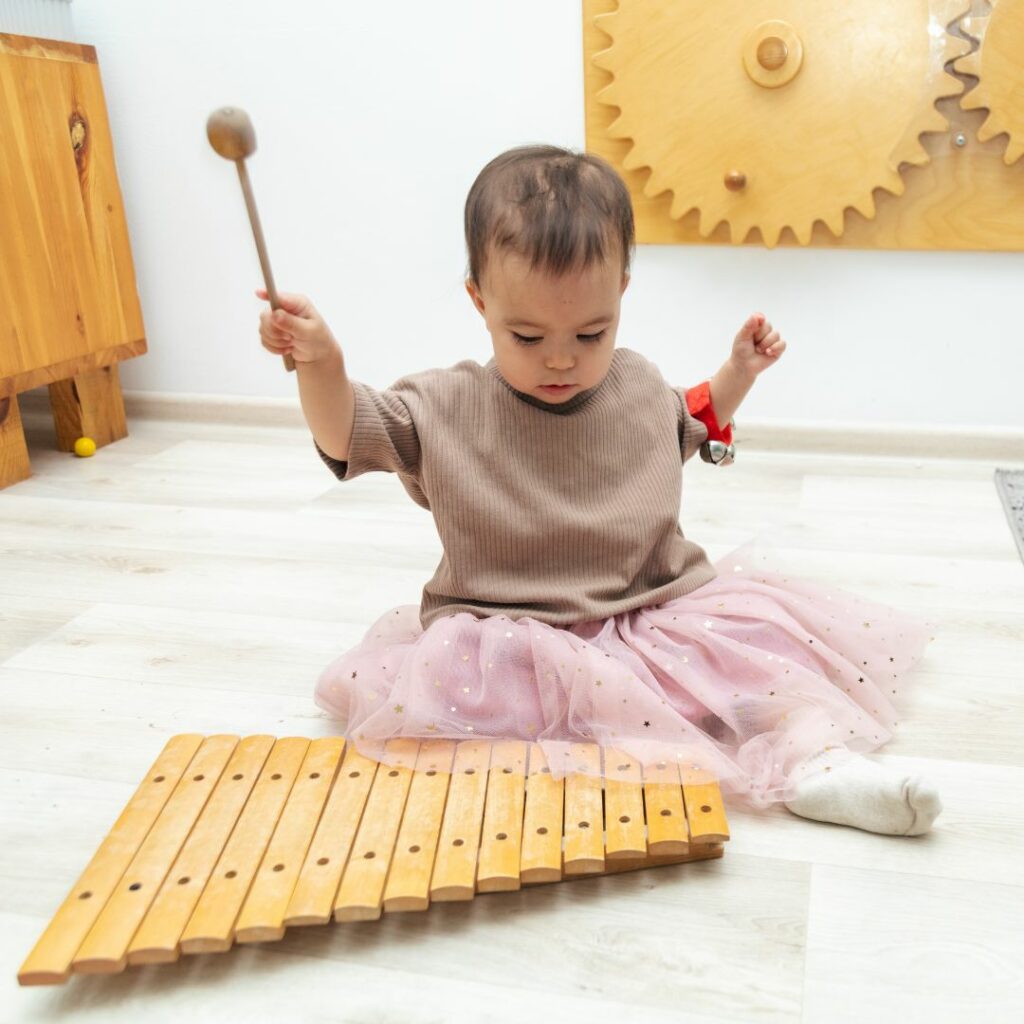
As you can see, there are plenty of sensory music activities for toddlers with hearing loss that can bring joy and learning into their lives.
By engaging multiple senses and creating enjoyable experiences, you can help your child develop their musical abilities and enrich their overall development.
Don’t forget to download your free Sensory Play Guide!
more resources for sensory activities
The Best Music Toys for Babies
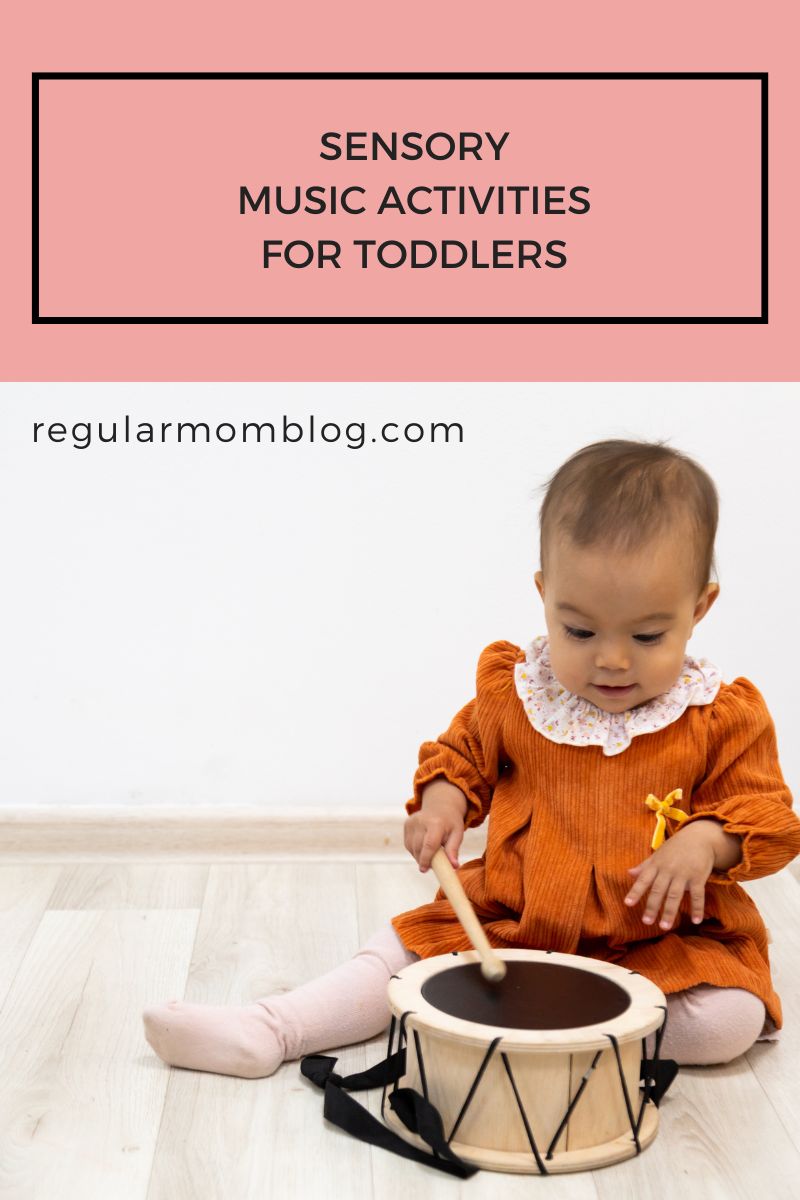
tell me more!
tell me more!
@alemerinobranding.co
DESIGNED BY: ALE MERINO BRANDING CO.
COACHING
Navigation
PODCAST
ABOUT
HOME
Legal
PRIVACY POLICY
TERMS & CONDITIONS
Let's connect
EMAIL hello@raisingdeafkids.com
BLOG